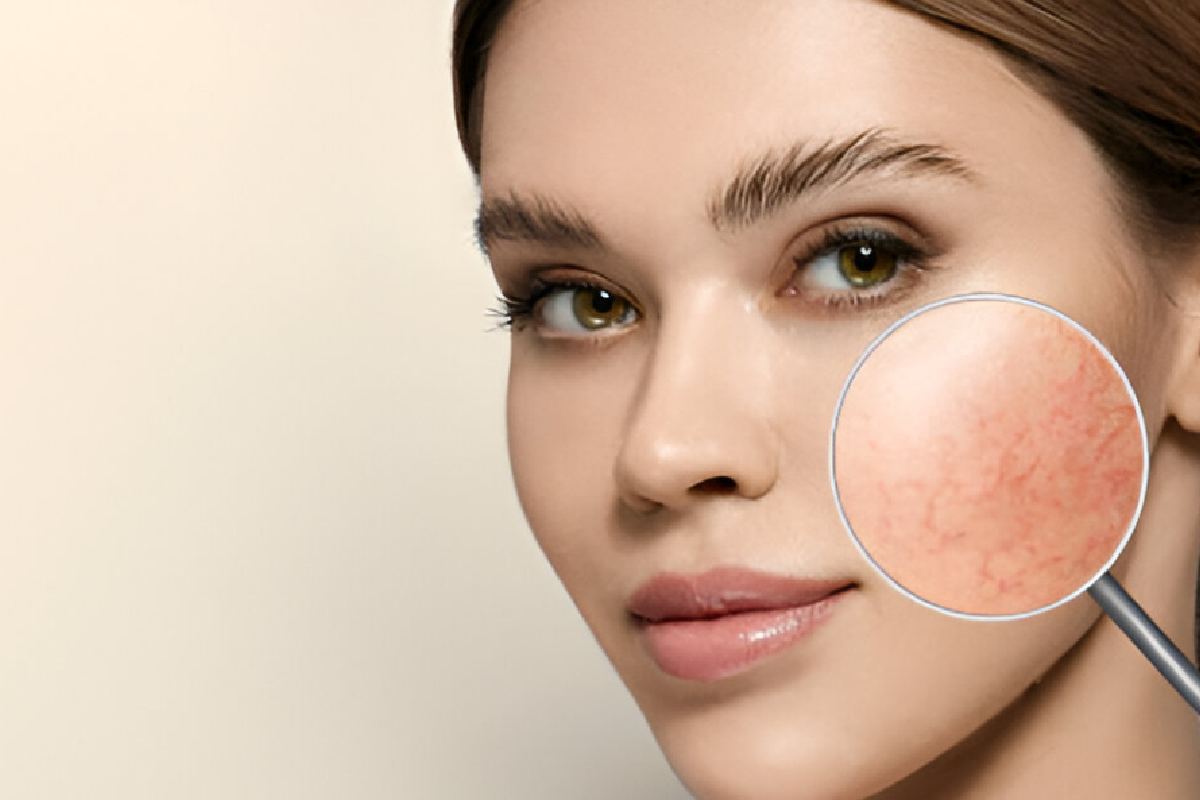Dry Skin and Dehydrated Skin – We often hear that skin can be dry, normal or oily, with different redness characteristics, sensitivity, dehydration, and acne. But any skin can present a dehydration problem, with more or less noticeable effects depending on the skin type. Skin; dry skin will suffer more than oily skin, for example.
Usually, dehydration can appear on both the face and the body. The lack of water translates into general discomfort after hot showers or baths, itching and reddening the skin. Although the symptoms are similar, dry skin is not the same as dehydrated skin.
Table of Contents
Water On The Skin
Our body is composed of approximately almost 70% water in adulthood, of which about 15% represents the water that is concentrated in the skin.
The skin’s internal water moves from the deepest layers of the dermis to the outermost layers of the epidermis, hydrating and moisturizing the intermediate layers as it goes.
When we talk about the hydrolipidic layer of the skin, we refer to the barrier function, which is the essential function of the skin since it acts as a barrier preventing the loss of water, electrolytes and other components, also avoiding the penetration of harmful substances from the environment. Environment. The hydrolipidic mantle is a mixture of sebum and sweat that covers the outer part of the epidermis and that we have from the moment of birth.
Two substances reach the skin surface through the different pores of the skin: sebum (fat part, “lipid”), produced by the sebaceous glands; and sweat (aqueous component, “hydro”), which is by sweat glands. When they reach the skin’s surface, both secretions mix to form the emulsion known as the hydrolipidic layer. It has a double function: on the one hand, it helps maintain the degree of skin hydration, and, on the other hand, it is the cause of the characteristic velvety appearance of our skin.
The stratum corneum remains naturally protected thanks to the skin’s hydrolipidic layer, preventing the skin from “evaporating” the water and keeping it properly moisturized. If this protective barrier, the loss of hydration from the skin increases and there is a direct effect on the skin of dryness, tightness and discomfort. (If you don’t know what the stratum corneum is, dermis or epidermis, we recommend reading our article ” Know your skin ”)
Dehydration And Its Causes
The leading causes for which dehydration can appear are varied:
- PASSING STATE. That’s right, seasonal and hormonal changes and stress directly influence our skin.
- ENVIRONMENTAL FACTORS. Cold, wind and pollution can accelerate the process of water loss from the skin.
- BAD HABITS. Tobacco or alcohol negatively influences health and, of course, our skin.
- STRESS AND TIREDNESS. So our skin suffers the consequences of imbalances in schedules, daily life and changes in our routine.
- CERTAIN DRUGS. Generally, treatments intended to combat acne are usually more aggressive than usual and tend to dry out the skin.
- USE OF AGGRESSIVE PRODUCTS. Cleansers with aggressive formulations or exfoliating products regularly can cause skin dehydration.
Dry Skin Or Dehydrated Skin
The main difference is the duration: dehydrated skin is a seasonal and temporary process that can affect any skin, being reversible with products and treatments adapted to the specific needs of said skin. On the contrary, dry skin suffers from a constant state of dryness, tightness, and discomfort due to a lack of water and lipids.
A Dry Skin
Dry skin is branded by a pale and lifeless appearance, peeling signs, cracks, inflammation, and loss of elasticity. In addition, dry skin tends to suffer from eczema and atopy, along with skin irregularities
Dry skin can be caused by different reasons, just as not all dry skin is the same. Normal dry skin will improve its appearance by being treated with moisturizing and nourishing creams for dry skin throughout the year. However, other skins with more extreme dryness will need more specific intensive hydration treatments to experience a sensation of comfort.
Dry skin can be:
- DRY. With tightness and slight dryness, with little or no peeling.
- VERY DRY. So more significant tightness and dryness, presence of peeling, fissures and cracks.
- PREV TOPIC XEROSIS. Before skin with a rough, rough appearance, with the presence of irritations and spots.
Una Piel Deshidratada
As we have mentioned before, dehydrated skin is a temporary state of the skin. So with specific treatments to maintain skin hydration or with a return to normality in the face of stressful or complex situations, the skin will recover its normal state, and dehydration will disappear.
Beneficial Active Ingredients For All Skin Types
In both dehydrated and non-dehydrated skin, several active ingredients will help maintain the skin’s barrier function in optimal conditions:
- HYALURONIC ACID. The most demanded active ingredient in face cream formulations. It is the active star ingredient for skin hydration due to its great hygroscopic capacity (water retention in the skin) and its active and passive hydration: it not only actively hydrates the face but also prevents the skin’s water from evaporating, obtaining an effect of smooth, plump and intensely hydrated skin.
- ALLANTOIN. Active with moisturizing and soothing action suitable for all skin types. It promotes healing by stimulating cell proliferation.
- CHIA. Regulates transepidermal water loss, preventing loss and slowing down dehydration due to its high carbohydrate content and hygroscopic properties. In addition, it performs an antioxidant action avoiding the damage caused by free radicals due to its high content of Vitamin C, chlorogenic acid and caffeic acid.
- FUCOCERT. The active ingredient that provides double action hydration. Before short and long-term. It favours the formation of a moisturizing film that gives the skin a silky touch.
- PANTHENOL. A skin regenerator that hydrates and improves the skin’s elasticity is easily absorbed in the layers under the skin’s surface.

